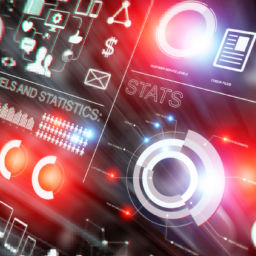
Big Data is one of those tech buzzwords everybody’s been talking about, but only a few really know what it’s all about. That being said, we’re sure of one thing: the concept of Big Data is here to stay, especially in the business world where it’s seen as one of the driving forces now and in the future for effective decision-making.
As such, it’s highly important that those in business—especially managers and owners—know more than a thing or two about Big Data and the component data analytics scene. For those in or planning to enter the world of business, see below: Things you should know about Big Data.
1. Wait, what exactly is Big Data?
In its simplest terms, Big Data is just a lot of data. Data is collected in and from a wide range of different places, such as government databases, corporate databases, gadgets (IoT), the internet, and many more. Then, it can be aggregated, ready to be stored, categorised, and analysed.
As a result, by having access to and analysing Big Data, you can make better, more informed decisions regarding a lot of things, especially in marketing campaigns and sales strategies to customer support and even the improvement of internal processes.
2. What kind of important data are we talking about?
For companies, the potentially important data can range from customer preferences, purchase history, and search engine results, to sensor data from smart devices. In essence, many companies are currently using Big Data to find out more about their customers and target market’s behaviour in relation to their marketing efforts and products/services.
3. Is all this data new?
Not necessarily. The data itself may have been collected over a period of time and is still being collected today. Some of the data will be brand new and some of it will be historical. What is new is the ability to have all of this data in one place and to analyse it so that it becomes useful for a company. You can get data from many different sources, combine it, and then analyse it for key insights that can improve your business. Looking back at historical data with modern tools can even facilitate the setting of benchmarks for current marketing activity. The resultant current data can then assist in refining those benchmarks.
4. How is the data collected?
Data platforms such as MapReduce take large amounts of data and perform computations on it across several computers at the same time. The ‘Map’ part of MapReduce sorts and filters the data, moving it into categories. The ‘Reduce’ part combines the data and summarises it. This is one of the most popular methods for collecting data so that it can be categorised and summarised.
MapReduce is part of Apache Hadoop, an open-source framework for storing and processing Big Data. It uses clusters of computers to glean information from different databases.
The Apache Software Foundation developed Hadoop along with dozens of other open source tools for Big Data and other data-related purposes. This means there are minimal compatibility issues related to the collection and categorisation of data. The development of these open source tools is one of the factors that made using Big Data possible.
More traditional tools can be used to gather data as well, such as polls (online and offline), surveys, and databases. These can then be consolidated and analysed later for various business purposes.
5. What happens next?
Once the data has been collected and categorised, it needs to be properly interpreted. It is at this point in the process where you will determine what information you want to get out of the data. Then you’ll need the necessary digital tools and/or manpower to set up the analysis so you can get information that you can act on.
Here’s where data management systems such as our own Latize Ulysses comes to the fore. It’s not enough that you know where to look for and how to gather Big Data—all that will be meaningless if you won’t be able to interpret all that data properly to produce the insights you need. With Ulysses, you’ll be able to consolidate and make internal and external data sets work together to form an intelligent network of data about different things (from people to businesses) from which insights useful for your business can be derived.
6. What can businesses learn from all this data?
The real question is what do you know what you want or need to learn? The data itself under Ulysses can assist in answering that question. There’s so much information out there that it’s easy to become overwhelmed. Figure out what you want to achieve, and what you’re going to do with the insights, and then let the data tell you the path to your outcome..
A lot of companies use Big Data to reach more customers, enhance their services or offerings, or improve their internal processes. For example, in the retail industry, many businesses know who their best customers are. If all you want to do is sell to your existing customers, you may not need data analytics as much to help you do that. But, if you want to expand your customer base, data analytics can definitely help you out. Big Data insights will help you determine things like your potential customers’ buying habits, the most effective form of communication and marketing for them, and even what your business can provide to ensure repeat purchases. The same can be said about your business’ internal operations and processes. Through Big Data, you’ll be able to gather insights to help your business perform internally more effectively and efficiently.
In other words, no matter what your goals, intelligent use of big data can help you. Determining what you want to get out of all that data is an important first step when it comes to using data analytics to get closer to your business goals.
7. How do I find new customers through Big Data?
As we’ve previously said, you can use Big Data not only to keep current customers but to find new ones as well. By collecting and analysing data about your customers (such as their past purchases, buying routine, specific product feedback) and comparing it to the data collected about other people, you can determine the best way to target new consumers (or businesses, if you’re in B2B). This is called predictive analytics and it will help you make business decisions or devise product or marketing campaigns that will help you reach more people.
8. Are big companies already doing this? How can I compete?
Big businesses across different industries are using Big Data and data analytics to make business decisions, from Amazon and Starbucks to Netflix and General Electric. And they do so for different objectives, from improving their products and maximising platforms both online and offline for marketing, to building a proactive defence against fraud.
However, as we explained in a previous blog, small and medium enterprises, or SMEs, shouldn’t be afraid to make use of Big Data as well. Doing so will enable them to unlock useful insights that not only should help them improve but prepare them for the future as well, especially in terms of scaling up and expansion. You could even say that smaller businesses have an advantage over their bigger counterparts when it comes to utilising Big Data to improve internally: they are more agile and “open” to making and executing changes in business direction based on insights gathered via data analytics.
Now that you know a bit more about Big Data, don’t hesitate to harness its potential for your business. We at Latize offer data-driven solutions, such as our data management and interpretation platform Ulysses, to help you successfully make use of Big Data insights and put your business in a better position to improve and prepare for the future.



